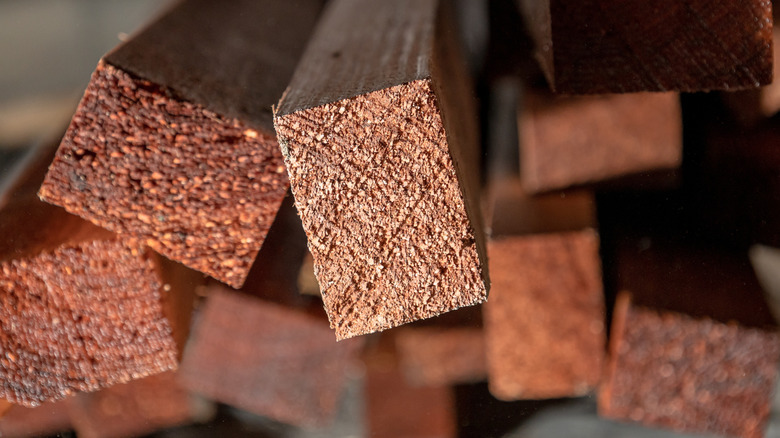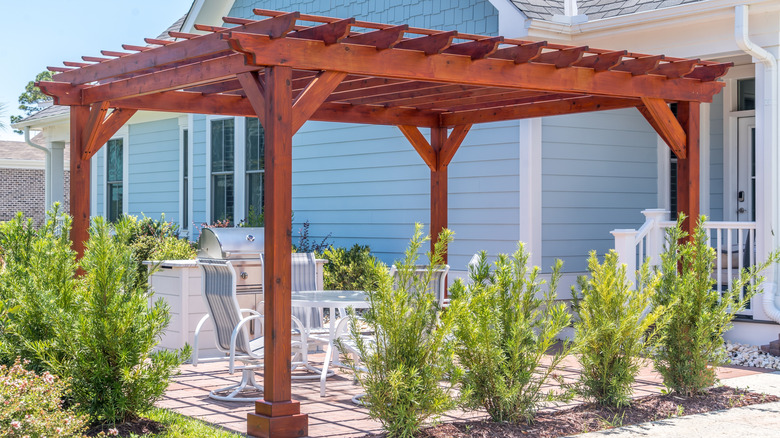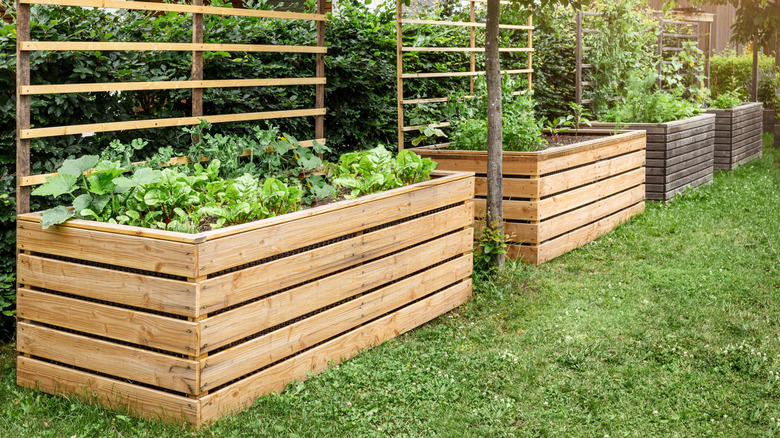How To Determine Which Type Of Pressure-Treated Wood Is Right For Your Project
Pressure-treated wood is an essential material for outdoor projects, offering durability and resistance against rot, insects, and moisture. However, not all pressure-treated wood is created equal. But how do you know when you should and shouldn't use treated wood for your home projects? The key distinction lies in its intended use: some types are designed for above-ground applications, while others are made to withstand direct contact with soil or water. Choosing the wrong type can lead to premature decay, structural instability, and costly repairs. Before selecting your wood, it's crucial to understand the environmental conditions it will be exposed to and how different treatments impact longevity.
Above-ground pressure-treated wood is engineered for structures that are elevated and have adequate drainage, minimizing prolonged exposure to moisture. On the other hand, ground-contact pressure-treated wood is fortified with higher chemical retention levels, making it capable of withstanding constant exposure to damp soil and water. Determining which type to use requires a clear understanding of your project's specific demands, as using above-ground wood where ground-contact wood is needed can lead to structural failure over time.
When standard pressure-treated wood is the right choice
For projects that are elevated, well-ventilated, and unlikely to experience prolonged exposure to moisture, standard pressure-treated wood is typically sufficient. This type of wood is commonly used for above-ground deck boards, railings, pergolas, and other structures that are not in direct contact with the ground, and it's also a durable type of wood that makes a great choice for fence pickets. Because it contains lower levels of preservatives, it works best when it has adequate drainage and airflow, allowing it to dry between wet conditions, reducing the risk of warping or fungal growth over time.
If you're building a deck where the framing and support beams remain at least six inches above the ground, standard pressure-treated wood is a cost-effective and reliable choice. However, if water regularly pools in the area or the wood will be installed in a humid climate with frequent exposure to moisture, you may need to reconsider and opt for ground-contact wood instead to ensure durability and longevity.
When you need ground-contact pressure-treated wood
For any project where wood will be in direct contact with the ground, water, or persistently damp conditions, ground-contact pressure-treated wood is essential. It contains higher preservative levels to withstand exposure to moisture, soil, and fungi, making it the only viable option for structural elements such as fence posts, retaining walls, deck support posts, stair stringers, and garden beds.
One of the decking mistakes that everyone makes is not using ground contact wood. Even if a structure is not technically in the ground, ground-contact wood should still be used in areas where water splashes frequently or where ventilation is poor, such as the lower portions of decks in humid climates or structures placed in shaded areas that don't dry quickly.
If a component of your project will sit close to the ground or be partially buried, erring on the side of ground-contact wood will help prevent rot and extend the lifespan of your build. Investing in the right type of pressure-treated wood from the start will save you from costly repairs and replacements in the future.


